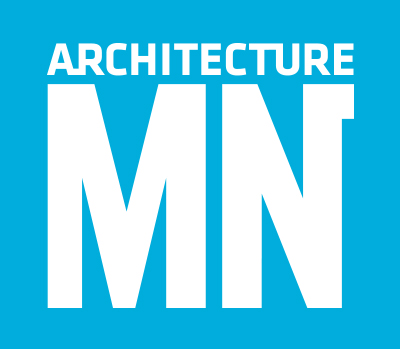A colorful and light-filled new medical center marks a bold first step in making an urban healthcare campus more convenient, easier to navigate, and—most of all—more welcoming
By Linda Mack
It’s an understatement to say that the Hennepin Healthcare Clinic & Specialty Center in downtown Minneapolis contrasts with the monumental concrete buildings housing what’s been known as HCMC. The first building that the Hennepin County safety-net hospital has built in 40 years, the new center leaves the older structures in the dust—aesthetically, experientially, and environmentally. From the curving glass facade on South Eighth Street to the light-filled waiting rooms, and from the up-front check-in stations and colorful artwork to the extra-large exam rooms, BWBR’s design for the six-story building sings a welcoming song.
Designed to achieve LEED-Silver certification, the building received a LEED-Gold rating this year. If there were a rating for patient-centeredness, it would be off the charts.
The project began in 2013 with the medical center’s need for more clinic space. Twenty-six clinics were spread around the six buildings on the HCMC campus. Patients with several appointments in one day had to traverse “a Habitrail of corridors,” says BWBR project manager Stephanie Alstead, AIA. The dispersed clinics and imaging centers created operational inefficiencies while occupying expensive hospital space.
BWBR was hired for the master-plan phase to identify a site for a new building that would house all those clinics. After evaluating a half-dozen properties, Hennepin Healthcare chose the block on the western corner of Eighth Street and Chicago Avenue, directly across from the emergency-room and urgent-care entrance at the medical center. It could be easily linked to the existing complex while improving a brownfield site holding surface parking and some underused buildings.
Continuing with the building-design phase, BWBR faced the L-shaped building toward the existing complex, pulled it back from the street to create an easy drop-off area, and fit it around an existing apartment building. Landscaping and a new pocket park add green space to the dense Elliott Park neighborhood. Metal panels in several shades of earth-tone orange relate to the historic brownstones nearby.
“It looks nothing like the existing buildings,” says BWBR’s Jim Davy, AIA, the lead designer on the project. “But it fits into the neighborhood,” adds BWBR medical planner Scott Holmes, AIA.
A rarity in the area, the curving glass facade is “a picture window to the community,” says Davy. “It lightens the spirit of the campus.” Bill Howden, Hennepin Healthcare’s director of facilities and campus planning, describes the building’s atmosphere as “a democracy of light.”
Designing the interior was an exercise in simplifying, says Alstead.
With Hennepin Healthcare’s diverse clientele, many of whom do not speak English, wayfinding was crucial. However patients and their visitors arrive—by car parked underneath the building, by bus or drop off on the first floor, or via skyway from the hospital—the pathway is the same. There are only three circulation routes, says Alstead: vertical via the elevators, along the glass front to exam rooms, or straight back through the center.
Dotted with cushy furniture, the waiting spaces are curving and informal, while the clinic spaces are necessarily rectilinear, says Davy.
“Hundreds and hundreds” of design ideas came out of a week-long, Lean-focused “3P: Production, Preparation, Process” workshop, says Holmes. Among them was the idea of a prototype exam room that would be used for every kind of clinic. “We wanted to build tents, not castles, to provide flexibility for the future,” he says.
The exam rooms are larger than normal to accommodate wheelchairs and interpreters, and they’re arranged so that patients enter from the public areas and medical staff from their open office space on the other side. “The onstage/offstage circulation separates the traffic flows of patients and staff,” says Alstead, creating more privacy for both.
Another important design consideration was colocating certain clinics—physical therapy, occupational therapy, and traumatic brain injury, for example—to improve interdisciplinary care. “It’s great for patients, but it also fosters collaboration among physicians and staff,” says Alstead. Clinics are also located for optimum patient convenience; for instance, allergy shots and orthopedic are on the first floor.
On the urban scale, the Hennepin Healthcare Clinic & Specialty Center is another positive step in the revitalization of a once-dreary downtown edge. The biggest spur to the area’s redevelopment, U.S. Bank Stadium, was under construction five blocks away at the same time as the clinic building. Thrivent’s new headquarters now under construction will connect to the hospital complex via skyway, and two other nearby blocks are slated for redevelopment as well.
Equally important, the next phase in Hennepin Healthcare’s master plan is renovating its existing buildings, which range in vintage from the 1920s to the 1970s. Plans call for reconfiguring interior spaces freed up by the consolidation of multiple clinics in the new building, and a project that will further transform the neighborhood: re-siding the aging metal and concrete exteriors to be more colorful and welcoming.
HENNEPIN HEALTHCARE CLINIC & SPECIALTY CENTER
Location: Minneapolis, Minnesota
Client: Hennepin Healthcare
Architect: BWBR
Principal-in-charge: Rick Dahl, AIA
Design team: Jim Davy, AIA; Scott Holmes, AIA; Stephanie Alstead, AIA; Charles Orton, AIA
Energy modeling: Willdan
Landscape architect: Loucks, Inc.
Construction manager: M.A. Mortenson
Size: 513,680 gross square feet
Cost: $228.6 million
Completion: March 2018
Photographer: Brandon Stengel, Assoc. AIA


